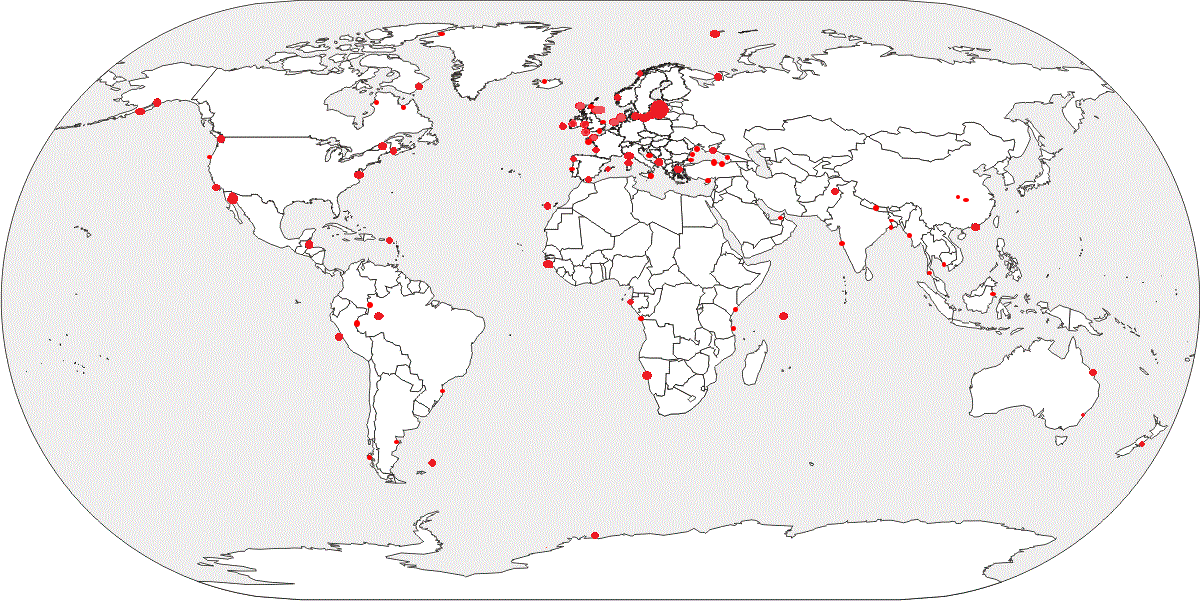
F-POD Design Aims
The F-POD design is fully integrated from the hardware through to the post-processing to deliver, at low cost:
- Fast results from fully automated detection processes
- Very low false positive rates
- High sensitivity
- Individual calibration
- Long running times
- Extreme robustness
- Optimal input to the KERNO-F classifier
- Low data volumes
- Positive buoyancy
F-POD versions
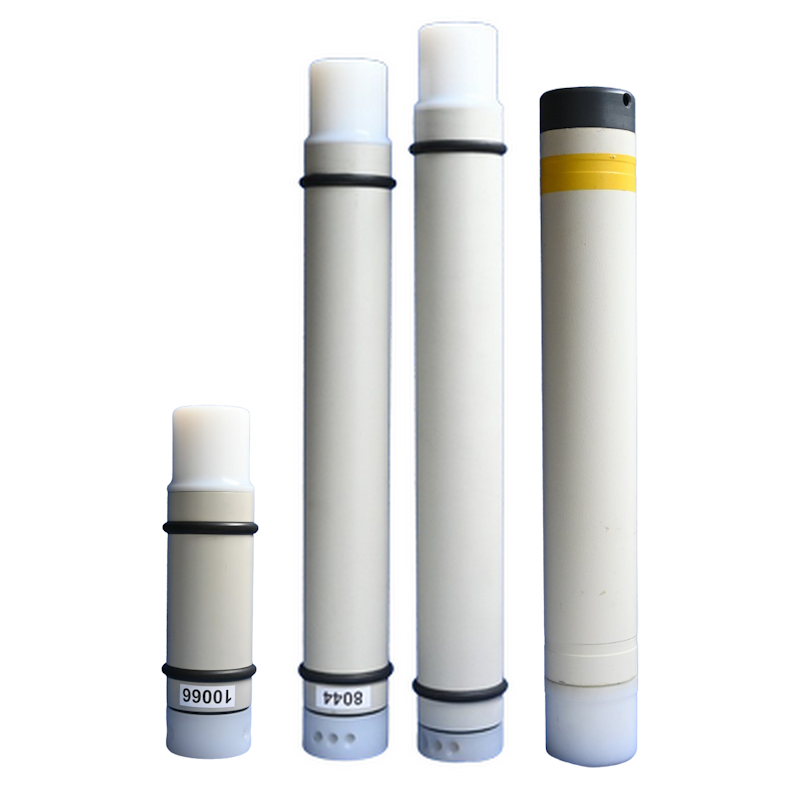
The same acoustic and electronic components are in each of these housing versions:
• 'LF-POD R10' - a smaller version for use on fishing gear, uses 10 rechargeable 21700 cells
• 'F-PDO D10' - the original F-POD, uses 10 D-cells
• 'F-POD D12' - replaces D10, uses 12 D-cells
• 'F-POD R25' - uses 25 rechargeable lithium 21700 cells
• 'Deep F-POD' - a heavy metal housing for deep deployments, can be made as a D-cell or rechargeable POD
Kerno-F classifier
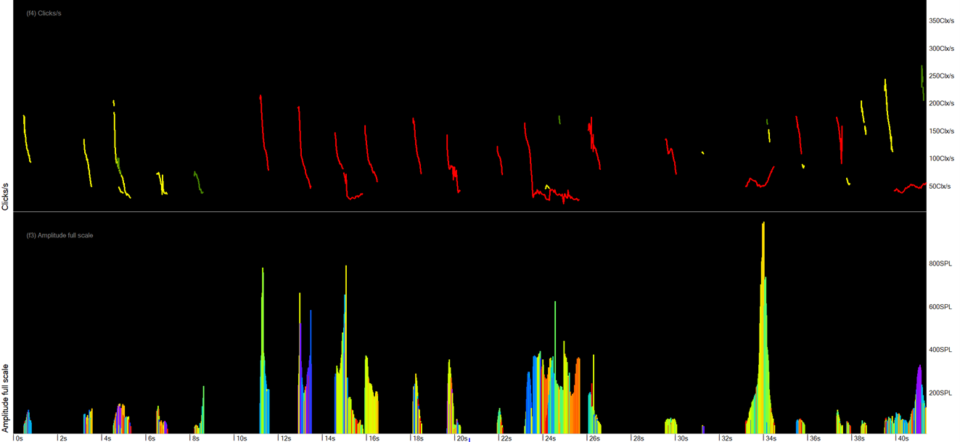
The KERNO-F classifier uniquely provides dolphin detections of high enough accuracy to allow their direct use in statistical analyses without individual checking by a human analyst.
It has proved remarkably good at unpacking the click rate in social click bursts. These are emerging as an important part of communication in dolphins and the most important form of social communication in porpoises.
Case Studies
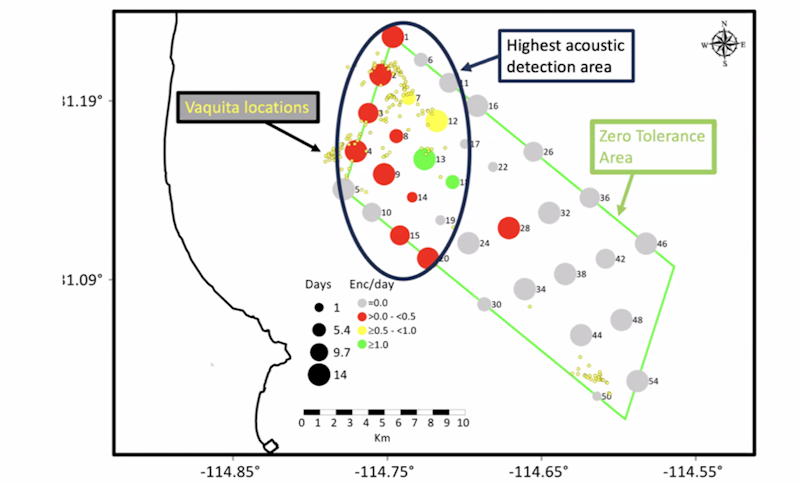
The Vaquita project uses PODs to monitor this extremely threatened species. The results stimulated signficant novel conservation actions.
The SAMBAH project collected 400years of C-POD data from the Baltic Sea and lead to the creation of a conservation zone for the Baltic Sea Harbour Porpoise.
Windfarm EIAs showed that pile driving can temporarily displace porpoises by 25km. ... and more ...
Species and behaviour
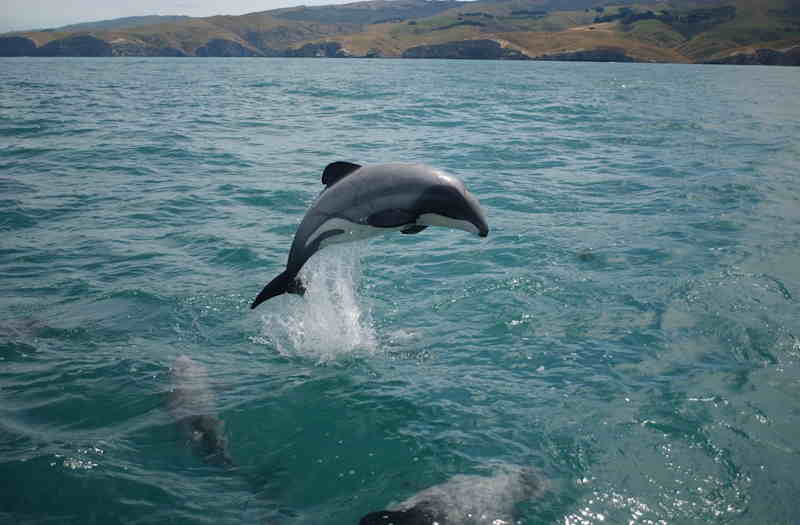
Distinguishing species using their clicks has proved very difficult for all acoustic approaches. F-POD data carries additional information on click train structure, prevalence of different click rates during encounters etc. and this additional information will be of value in distinguishing species and behaviours.
F-PODs give rapid access to huge volumes of behaviourally significant click-rate data, and work is expanding in these areas.
Research
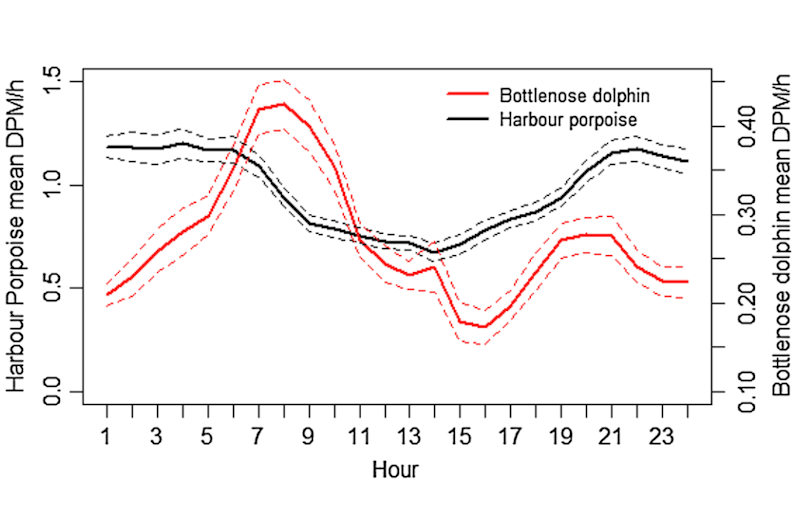
PODs have been the primary source for many papers and several PhDs. This graph comes from Nuuttila et al. studying cetaceans in Wales.
There are many unexplored areas:
Click rate profiles within fast click bursts / Social communication / determination of group size / diel and seasonal patterns / effects of boat sonars on cetaceans / responses to sediment transport noise / inter-species differences etc. etc.
Project Planning
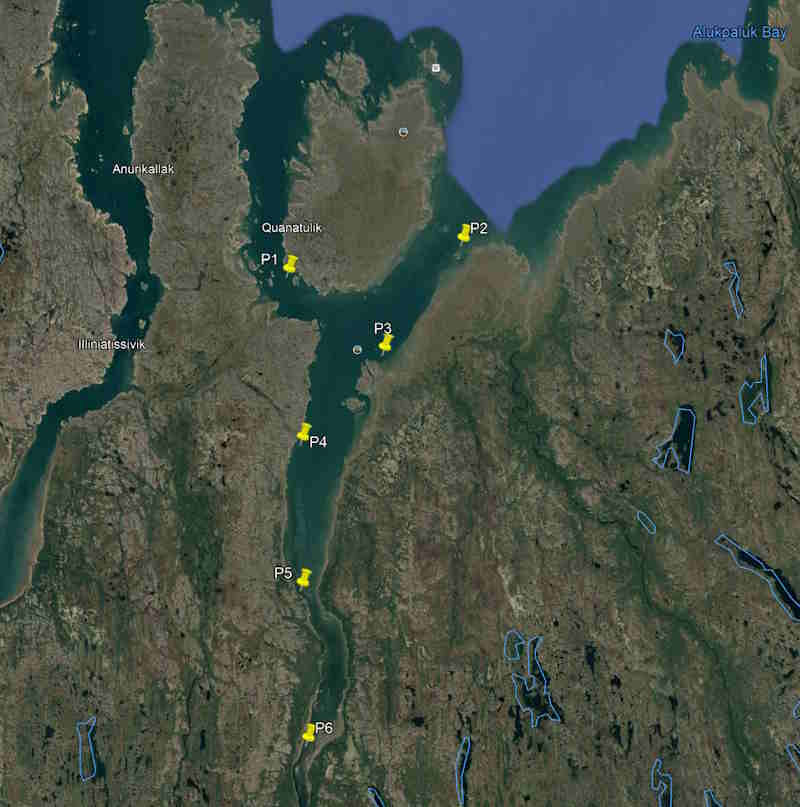
Notes on some of the key questions that arise in planning a project.
The most significant is 'What is the question I am trying to answer with acoustics?'
Often the data collected to do one thing can do more, and provide the relevant data to answer other questions as well.
F-POD specification
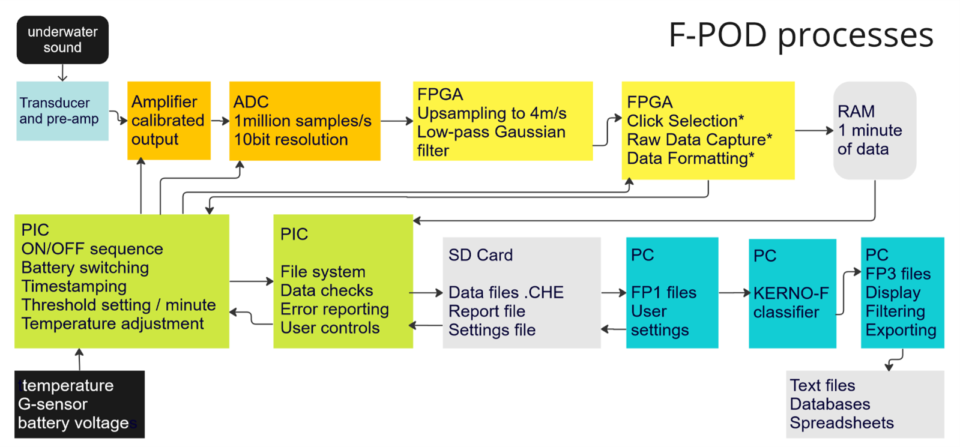
The F-POD technology is unique among acoustic loggers, as it is based on high-resolution time-domain signal processing and data selection in real time to give data compression factors of >>1000 while retaining very precise key data
All cetaceans with teeth use echo-location. The F-POD detects all of them except the Sperm Whale.
WAV data
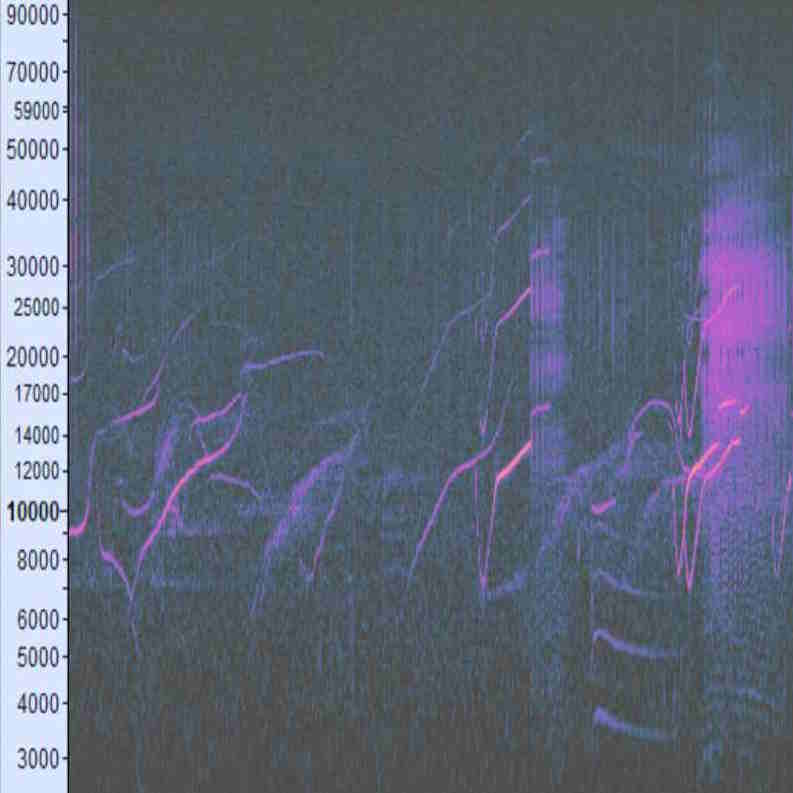
For many projects the combination of an F-POD doing selective very fast sampling with a conventional .wav file recorder sampling slowly is ideal: The F-POD gives you the click trains and the .wav recorder gets dolphin whistles etc which are below the F-POD frequency range.
The C-Sound logger - an AudioMoth in a LF-POD housing - will be a possible solution to this.
New developments
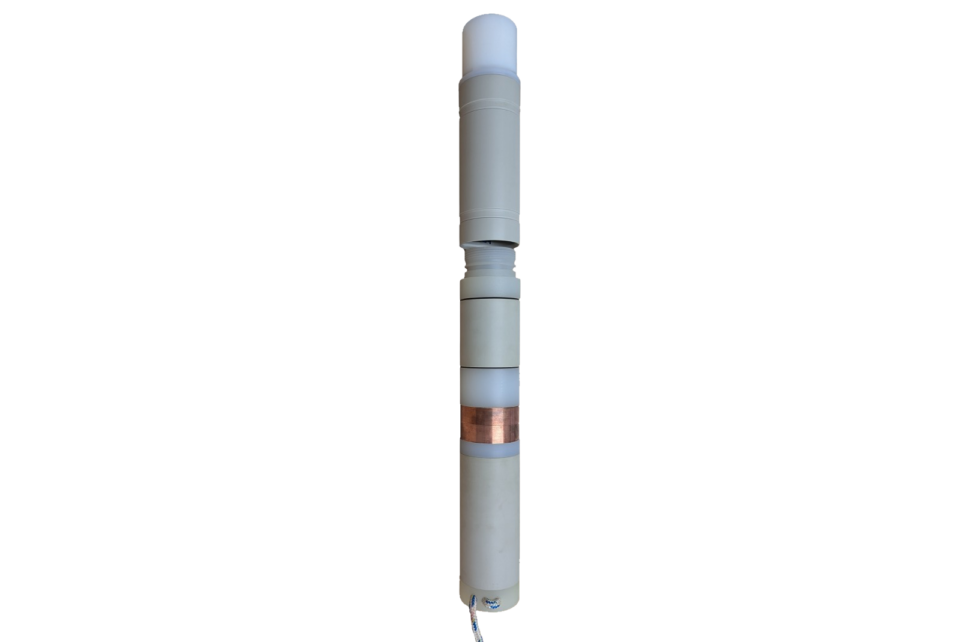
An integral acoustic release is in development.
When combined with the new rechargeable lithium battery pack a very low cost and low carbon one-year monitoring will be possible, using lighter deployment vessels, and having a reduced risk of loss of the mooring. This configuration will log alternate minutes.
Calibration
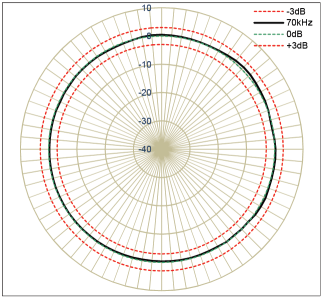
The acoustic performance of each F-POD is tested in an underground acoustic radial testing tank to give tightly standardised results (and reject any that do not meet the standard).
This means that instruments can be swapped between sites without significan effects on the data obtained.
Buoyancy
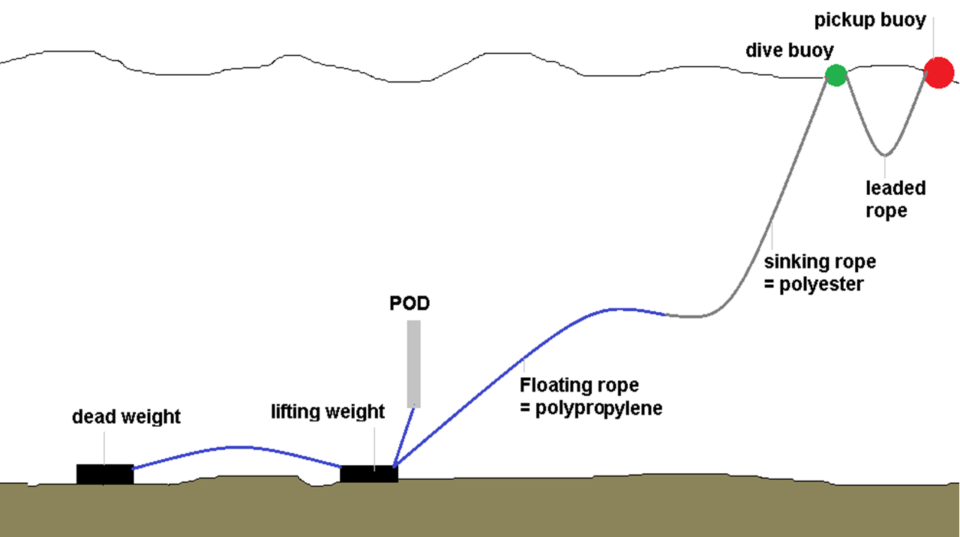
The buoyancy of the POD makes moorings simpler - it can just float up on a line without extra buoys that may snag lines etc.
It also means that lost PODs will strand on a shoreline sometime and may be recovered.
With the acoustic release a mooring could be simply a weight, a single line and an F-POD
Recovery
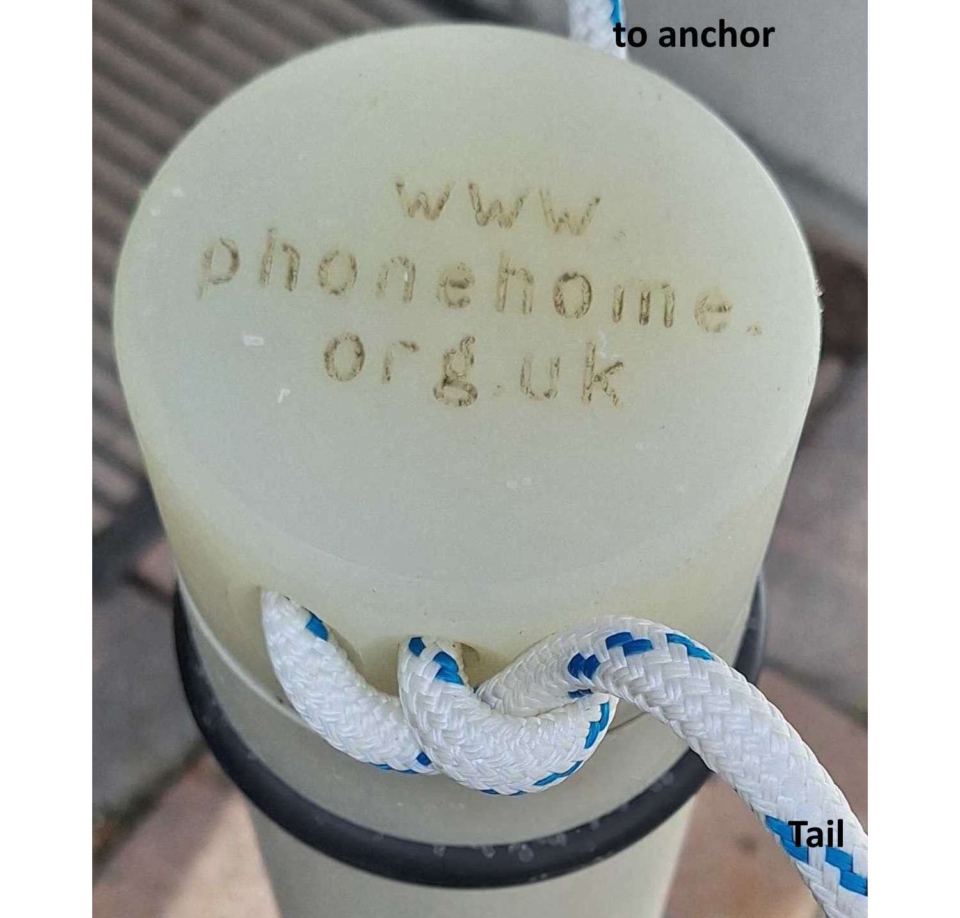
More than 100 have been re-united with their owners via the web address www.phonehome.org.uk engraved deeply into the lid.
A C-POD crossed the North Sea to Norway and arrived still running, and other set off from the German Wadden Sea and reached the White Sea north of Norway.
Most are in good working order when found!
Virtual F-POD
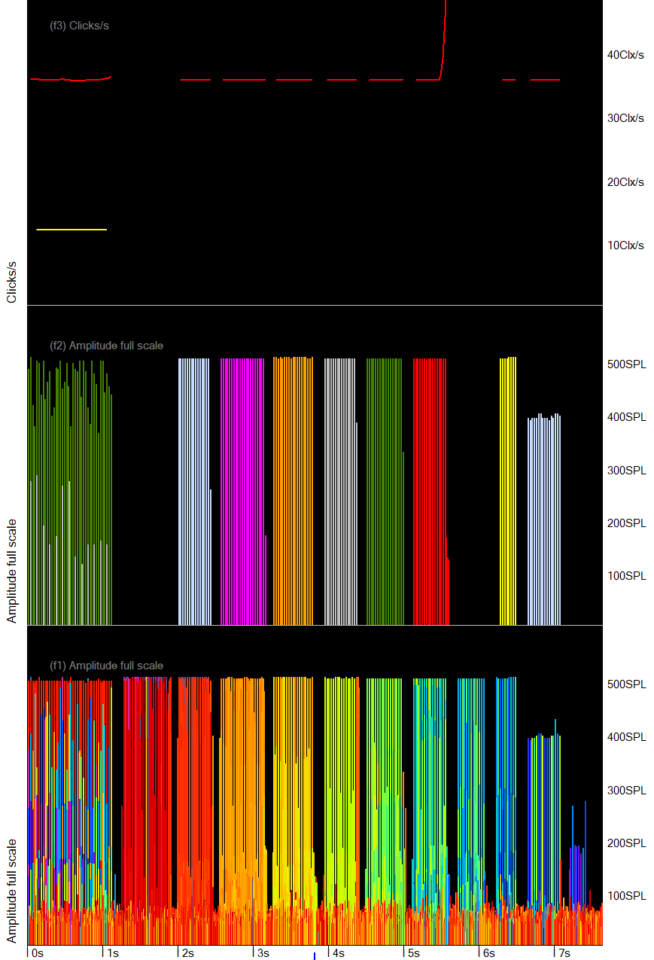
This is a virtual F-POD file synthesized from a WAVE file data logger recording in the Chelonia underground acoustic test tank.
The WavToPODFile utility that does this requires a sampling rate above 320-kHz
It is not in a refined or very user-friendly state and is offered 'as is'!